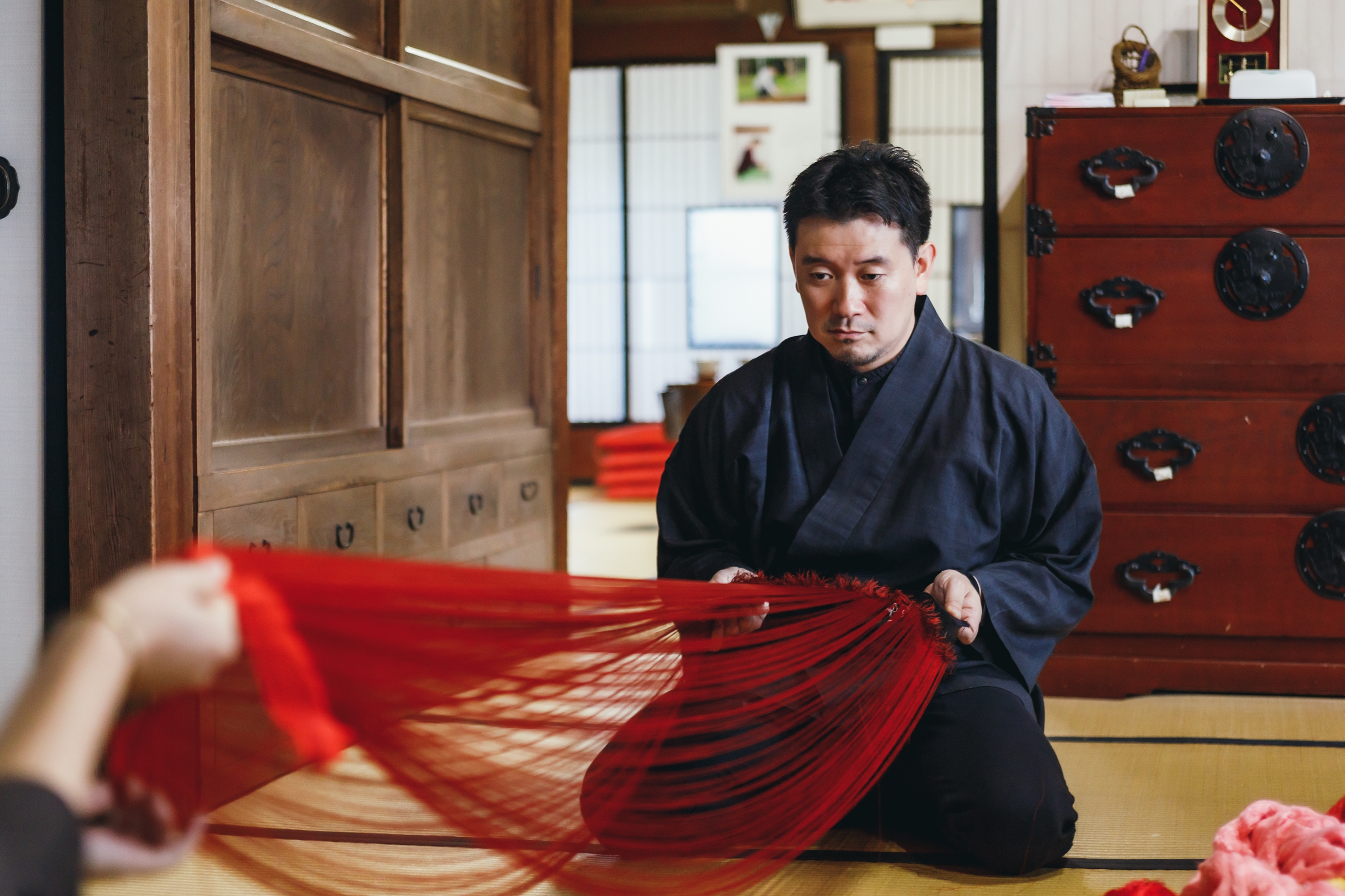- How did the integration of modern artistic elements through the collaboration with such an interesting artist like Yoichi Ochiai influence the traditional craftsmanship of Oitama Tsumugi, and what potential doors did it open for the future or complexities did it introduce?
Tradition is shaped by various factors, including techniques, technologies, and ideas accumulated over time, and it thus connects to the present. The collaboration with Mr. Ochiai became a significant attempt to connect Oitama Tsumugi to the future. We realized there were opportunities for us to seize more actively, not limiting ourselves to traditional Japanese wear like “Kimono” and “Obi”, but also exploring weaving techniques that can incorporate strength and functionality while maintaining its aesthetics and suppleness.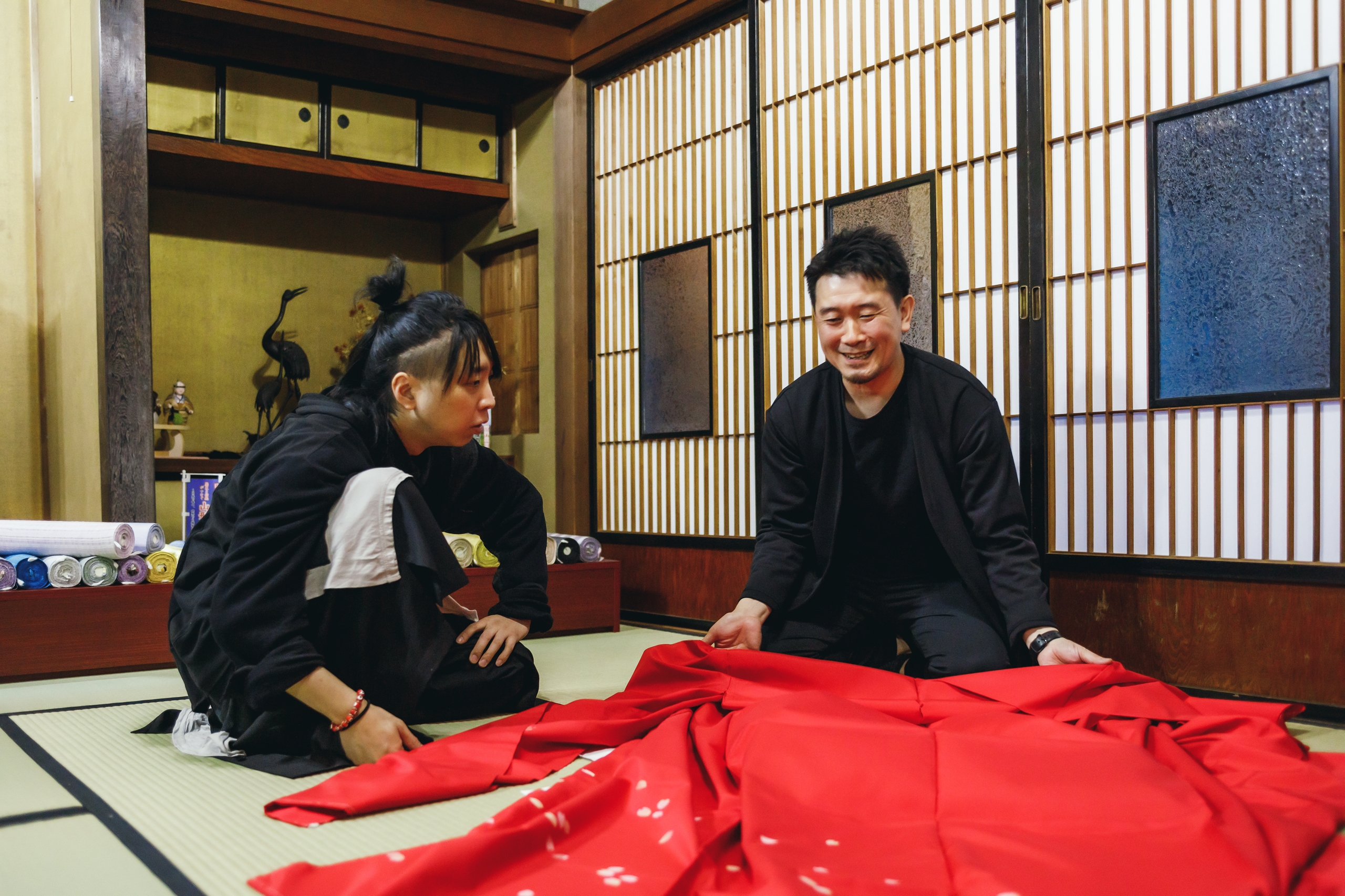
- Can you delineate the intricate adaptations or new methodologies developed to assimilate modern artistic expression while honoring the authenticity of Oitama Tsumugi?
For this collaboration piece, we used a technique to create transparency and expressed a wide width in handwoven fabric. Typically, Kimono fabric is narrow, around 38cm long, so weaving with transparency while maintaining handwoven intricacy was the first-ever challenge for our studio. Additionally, the dyeing process involved our inherited technique of “Benibana-zome” (safflower dye) for thread dyeing. Despite being plant-based, Benibana-zome captures color change over time, expressing the “Wabi-sabi” aesthetic through a temporal axis. The collaboration with Mr. Ochiai focused on creating beautiful and unique works with a new perspective rather than complex adaptations.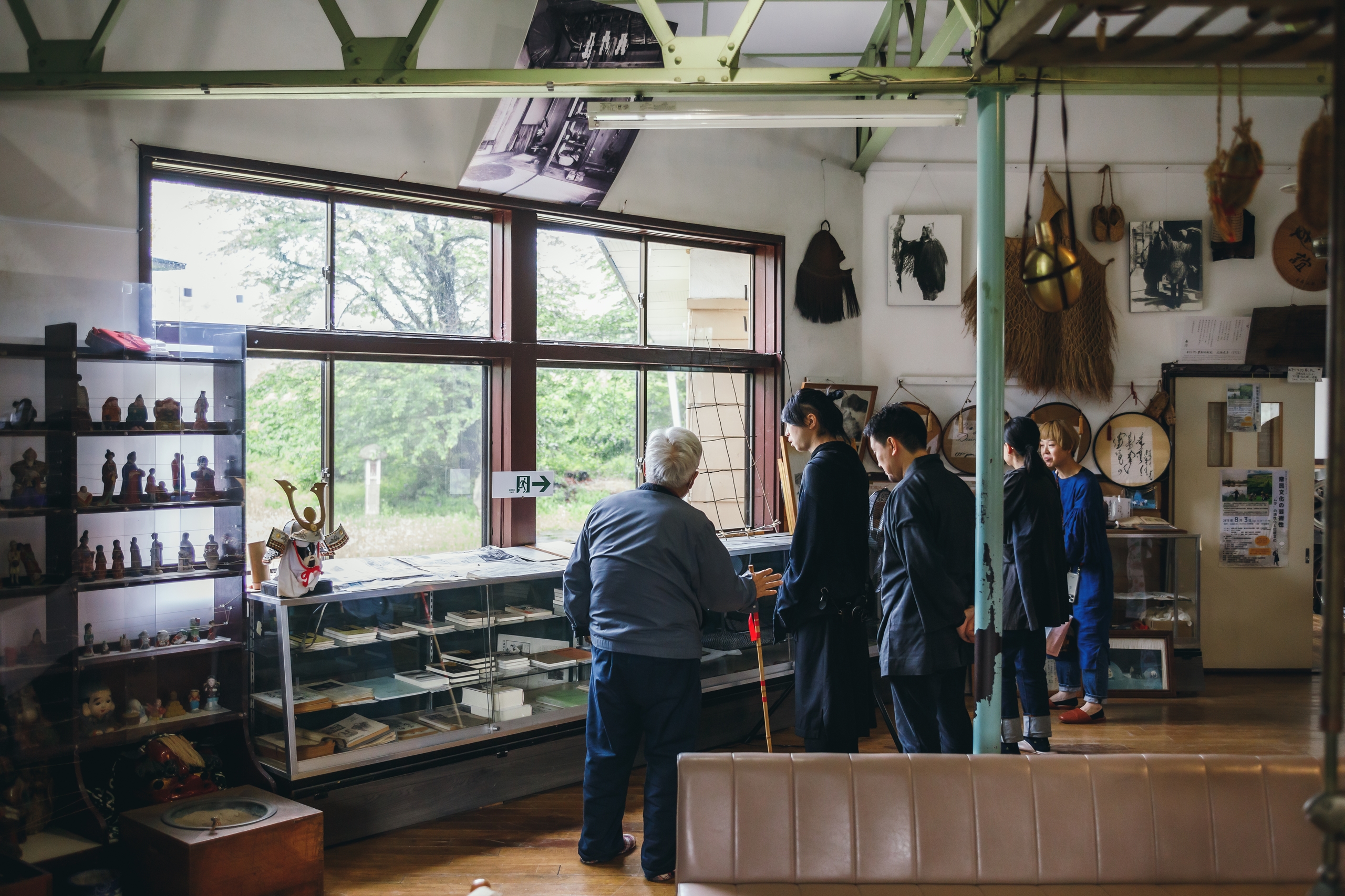
- Which aspects of Yoichi Ochiai’s artistic approach or vision posed the most intriguing or demanding challenges in their translation into the traditional craft of Oitama Tsumugi?
In approaching this collaborative work, Mr. Ochiai expressed a keen interest in understanding the history, culture, and traditions of Yonezawa. We visited various places together, and he valued detailed discussions with those familiar with the region. While known for his expertise on cutting-edge technologies, Mr. Ochiai’s analog approach and his fascination with historical places were captivating. Since he thoroughly understood our traditional craftsmanship, there were no perceived difficulties. We are only grateful for the opportunities he brought to us.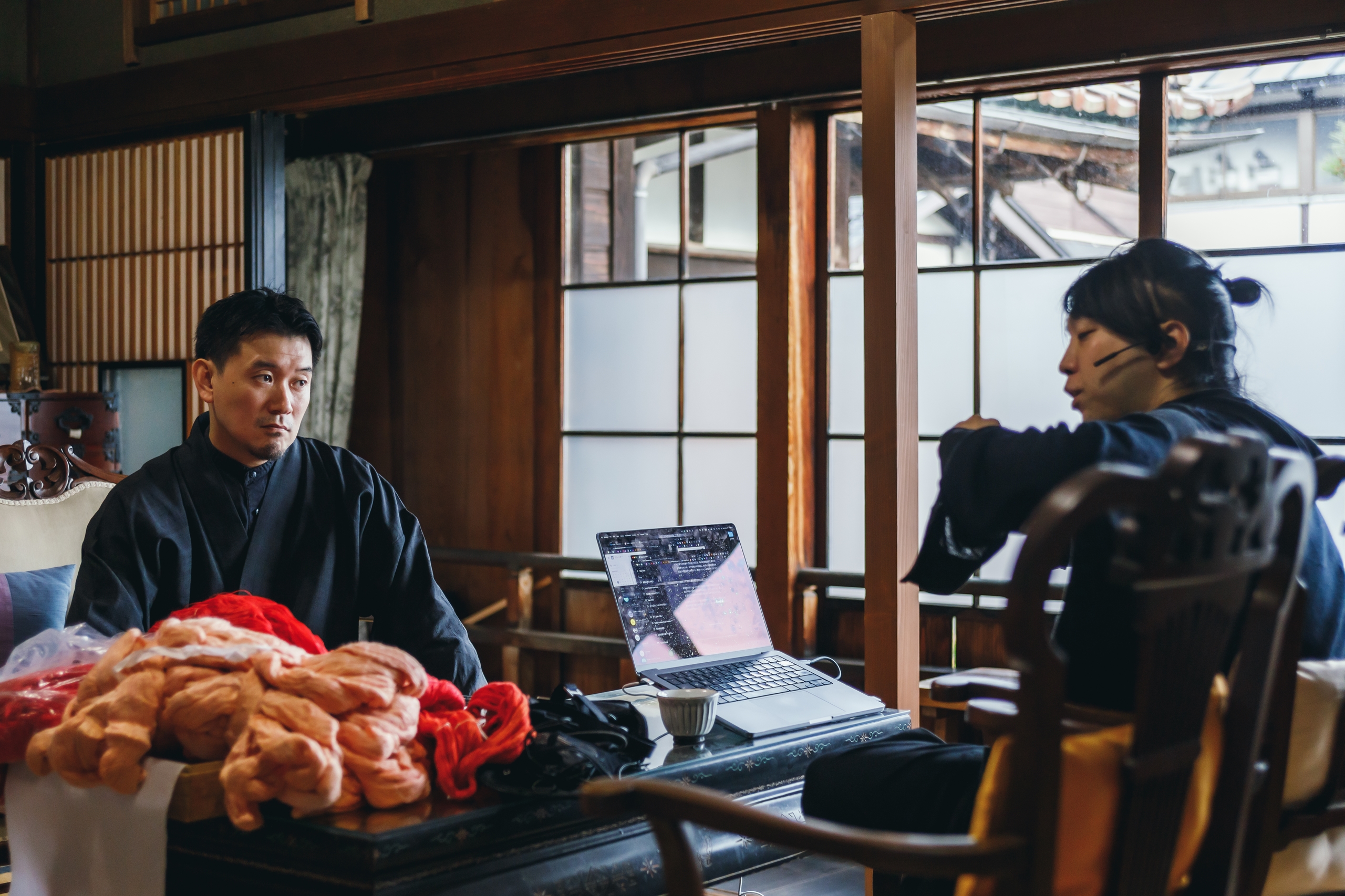
- In envisioning the future of Oitama-Tsumugi, how do you foresee this collaboration’s impact on preserving tradition while embracing contemporary art forms?
Tradition evolves through innovations in techniques, technologies, and the expressions of people or artisans at that time. This collaboration has given birth to a beautiful and unique art piece, paving the way for expanded possibilities in the future expression of Oitama Tsumugi.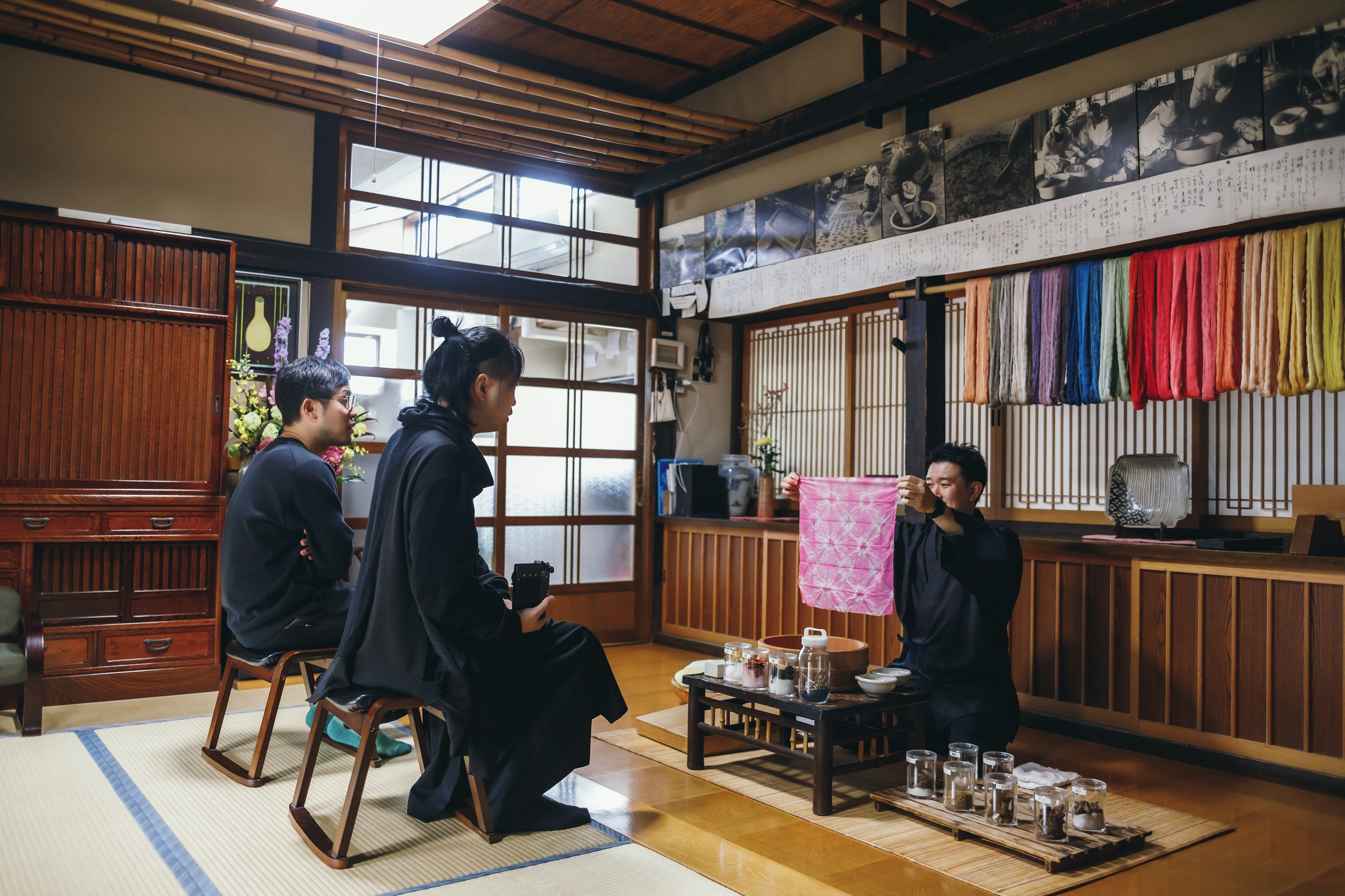
- Reflecting on your involvement in this collaboration, could you share how this experience has reshaped your perspectives on the evolution of Oitama Tsumugi craftsmanship?
This first-time collaboration for us not only has given us new discoveries but also has convinced us that Oitama Tsumugi is an ever-evolving traditional craft. The collaboration shifted our perspective from a regional or self-centric approach to embracing new connections without hesitation.
